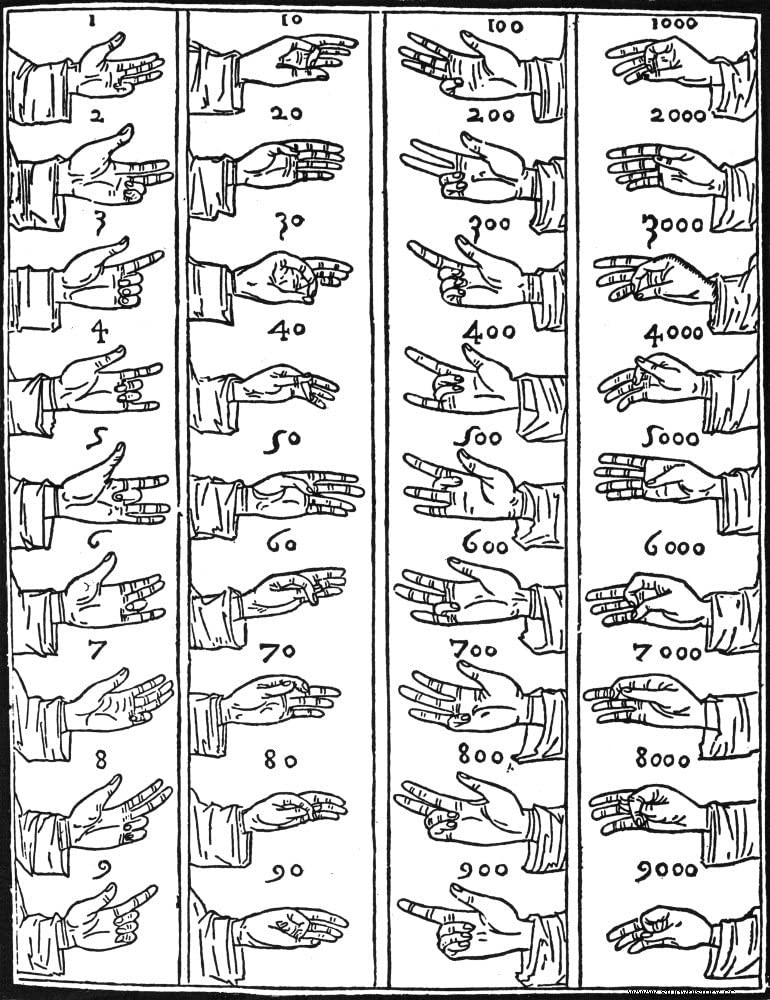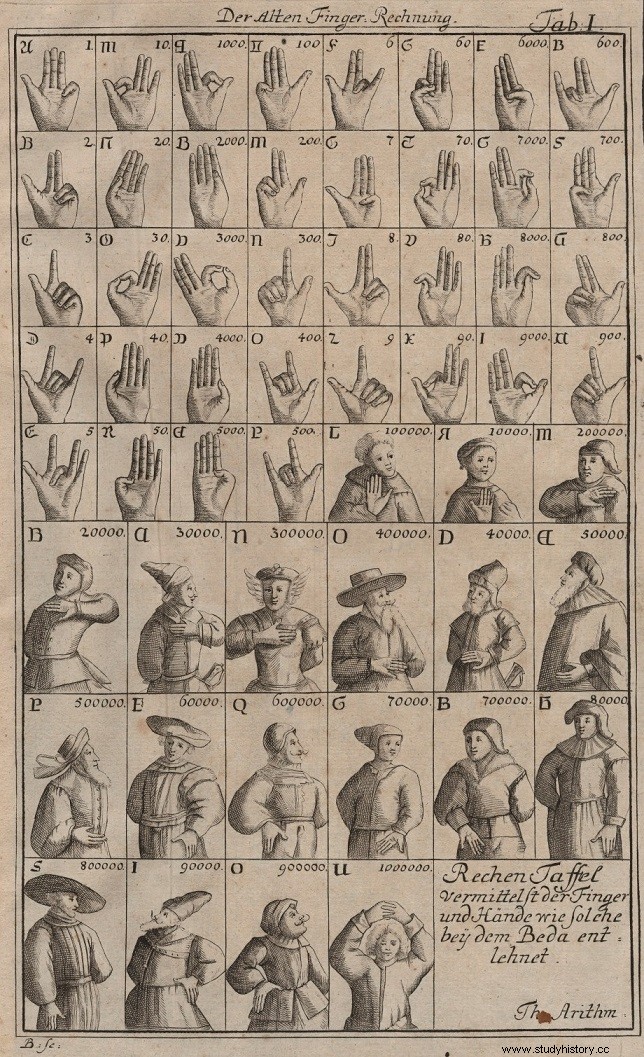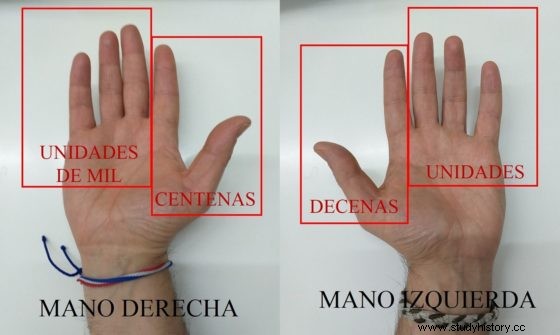
I would dare to say, and I think I am not mistaken, that counting with the fingers is surely the oldest way of counting in history, and although it was mentioned by the classics, no ancient treatise on the subject has survived, so it seems that the technique was transmitted mainly through oral tradition… or by seeing how animals did it. We have references to this method of counting in the comedy The Braggart Payoff of Plautus (" his right hand calculates with his fingers «); in Juvenal's Satire X (" counts his years with the fingers of his right hand «); Pliny, in his Natural History , tells that a statue of Janus, attributed to the time of King Numa, had his hands in the position in such a way that they represented the number 365 (days) -remember that Janus was the god of time, transitions, beginnings and ends. finals, and that in his honor we have Ianuarius (January)-; Quintilian also mentions this tradition and points out that the knowledge of numbers is not only essential for the orator and indicates that a lawyer who shows clumsiness counting on his fingers gives a bad image of himself. If you have noticed, we no longer only talk about counting the fingers, but also about how the numbers were represented with the fingers. And for this we have to resort to Bede the Venerable , a Benedictine monk from Northumbria, Great Britain.

"The Last Chapter" (1902), by James Doyle Penrose. Bede working on his deathbed.
Writer and scholar, his most famous work, Ecclesiastical History of the English People , chronicling the conversion to Christianity of the Anglo-Saxon tribes, earned him the title of "Father of English History". He helped establish the practice of dating from the birth of Christ (Anno Domini, "in the year of our Lord"), a custom that eventually took root in medieval Europe. But today he accompanies us for another of his works, De temporum ratione liber (On the division of time), written in 725. Based on the text of the first chapter of this book, entitled De computo et loquela digitorum (On counting and speaking with fingers), the mathematician Luca Pacioli made this illuminating illustration in the fifteenth century.

With only three fingers of the left hand (the little finger, the ring finger and the heart) it is possible to represent from 1 to 9; with the other two fingers of that same hand, the index and the thumb, we are going to represent the tens, 10, 20, and so on up to 90. So, using only the left hand we have from 1 to 99. On the other hand, for the hundreds (100, 200, 300, …) the index finger and thumb of the right hand were used, with the same signs as those described above with those same fingers, but of the left hand. While the little, ring and middle fingers of that same right hand were used, with the same gestures described for those of the left, to represent the units of a thousand (1,000, 2,000, 3,000,...). And don't go away yet, there's more.

To represent the tens of thousands, good old Bede describes 9 different positions of the left hand with respect to the body, and in a similar way the right hand is used for the hundreds of thousands. So, we will have from 1 to 1,000,000. Of course, as the digits increase the difficulty increases, becoming a good training to play at an expert level in Twister.
A concrete example…

The number 2,539. The right hand represents 2,000 with the little, ring and middle fingers and 500 with the index and thumb, while the left hand represents 30 with the index and thumb, and with the other three, 9

Sources:Count to a million on the fingers, Roman Elementary Mathematics
